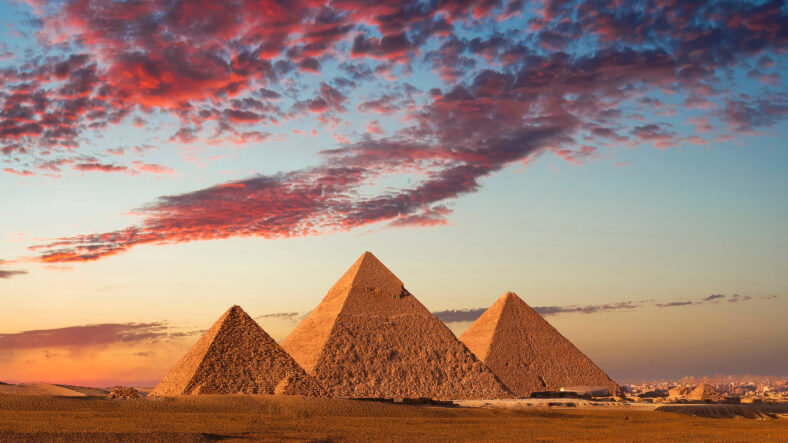This Is How The Ancient Egyptians Celebrated The New Year

Nowadays, people ring in the new year with fireworks, parties, and lots of champagne. These festivities may be what’s popular in modern times, but they were also practiced in ancient ones, too. Like us, the ancient Egyptians celebrated the new year and even held festivities by the Pyramids of Giza.
Their New Year’s festival was known as Wepet Renpet, which translates to “the opening of the year.” It actually included a few traditions that are still in practice today, such as giving presents to family and friends. However, some customs were very different from ours.
For instance, the ancient Egyptians would bring images of their deities out of temples so they could regenerate in the sunlight.
The date that Wepet Renpet also changed over time. Sometimes, it was celebrated several times a year. According to one account, the Egyptians celebrated three festivals in one year for a time.
The Egyptian calendar was created around 4,800 years ago. It had 365 days in a year but no leap year. Therefore, the day of Wepet Renpet was subject to change based on the climactic seasons.
It was highly dependent on the flooding of the Nile River in Egypt, close to the time of the summer solstice. The annual flood helped crops grow, leading to bountiful harvests.
By the start of the Middle Kingdom, which spanned from 2030 to 1640 B.C., Wepet Renpet fell closer to the winter solstice instead.
The Temple of Khnum, located south of Luxor, contains a calendar engraved on a wall. It marks the occurrence of three Wepet Renpet festivals in a single year.
The calendar dates back to sometime between the middle of the first century and the middle of the third century A.D., a period when the Roman Empire ruled Egypt.

Sign up for Chip Chick’s newsletter and get stories like this delivered to your inbox.
The calendar showed that Wepet Renpet festivals were celebrated on the birthday of the Roman Emperor, the first day of the calendar year.
On that day, the star of Sirius was said to have risen from below the eastern horizon. In 2023, archaeologists found a scene on the ceiling of the temple that may depict the new year when Sirius rises.
The celebrations would have involved worshipping deities and remembering the dead. During Wepet Renpet, statues portraying the deities were taken out into daylight because the ancient Egyptians believed the sun’s rays would regenerate them. Sometimes, they would be replaced by new ones.
Scenes on some ancient Egyptian tombs showed feasts held on New Year’s Eve and the exchange of gifts. The most famous object associated with the new year was a flask made of faience or glazed ceramic.
Some flasks contained inscriptions that read “Happy New Year.” They seemed more suitable for scented oils than for alcohol.
One example is housed in the Metropolitan Museum of Art in New York City. It was created for a priest named Amenhotep.
In keeping with Egyptian tradition, will you be handing out gifts for the upcoming new year?
More About:News





